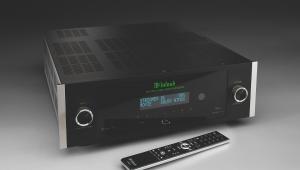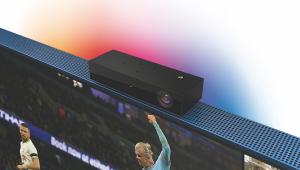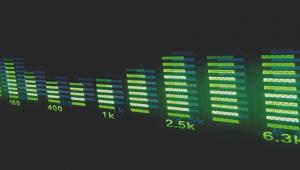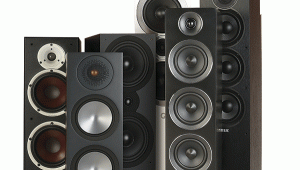Point of View: Sub-par TV sonics

It’s recently come to light that the buying public don’t like 3DTV, don’t connect their Smart TVs to the internet and 89 per cent of them are actually stone deaf. Now, a quick straw poll around the HCC office would suggest these figures are a little off the mark, but you can’t argue with the research. After all, these surveys of consumer behaviour form the basis on which TV manufacturers develop new products and new features for the year ahead. My email inbox is positively awash with survey results at the moment, and one guaranteed conclusion of this research is that 100 per cent of grumpy old AV columnists will get incensed.
Last month there was a Consumer Electronics Association (CEA) of America report that suggested the US public is nonplussed by 3DTV. Less than a quarter of all prospective television buyers said they were looking for a 3D-capable TV, mostly because they didn’t want to sit on their sofa sporting comedy Ray-Bans and a migraine. Shocking? Not really. The CEA also reported that most TV content is still watched on a TV. Yes, outrageous as it may seem, mobile phones, PCs and tablets are not yet the video display of choice. I’m glad I didn’t pay for those reports.
Back in Blighty, a study by quango pollsters YouGov has shown us that UK television buyers are essentially confused, technophobic and aurally challenged. The report indicated that less than a third of consumers were looking for a Smart TV and, of those purchasing a connected set, less than a quarter will actually get around to hooking it up to the internet. Now, I know it’s a pain to remember your Wi-Fi passcode, but that still seems a little lacklustre. Then again, consumers are stupid – ask them which company represents the most stylish and innovative Smart TV brand, and you’ll get Apple (which doesn’t yet make a TV) as the number one answer. Sigh.
So, why do people buy Smart TVs, if it’s not for the Smart functionality? Owners in the YouGov survey say picture quality (96 per cent), screen size (93 per cent) and, bizarrely, sound quality (89 per cent).
Listen up everyoneEighty-nine per cent? I’m staggered. As every single Smart TV on the market today has appalling sonics I cannot believe that nearly nine out of ten buyers think they sound any good at all. What the hell do these people use as the baseline from which to measure? Long-wave radio? An Edison wax cylinder player? Actually, it’s probably those awful, tinny headphones, isn’t it?
Audio is just not a priority among the major TV manufacturers these days. They have all, without exception, comprehensively downgraded the sound quality over the last decade to hit lower price points on the High Street. Today’s TVs have output wattage in the low single figures, drivers the size of a 1p piece and budget audio processors with all the mathematical power of an abacus.
Worse still, trendy cosmetics dictate that manufacturers craft their sets with virtually no frame around the screen. Fat-bezelled beasts just don’t sell. A couple of years ago audio specialist Bose released a TV with an integrated subwoofer and numerous speaker drivers, and a common reaction was, ‘Well, it sounds great, but it looks a bit chunky.’
This desire for thinness means the drivers are frequently relegated to the rear panel, facing backwards and often then squished against the wall. The sound lacks intelligibility, and it’s no surprise that the single most common phrase spoken between two people whilst watching TV is ‘What did they say?’ Okay, I might have made that particular statistic up...
Do you still use your TV’s own speakers, or is your AVR always on?
Let us know via [email protected] or log-on and comment below
This column first appeared in the August 2012 issue of Home Cinema Choice
 |
Home Cinema Choice #351 is on sale now, featuring: Samsung S95D flagship OLED TV; Ascendo loudspeakers; Pioneer VSA-LX805 AV receiver; UST projector roundup; 2024’s summer movies; Conan 4K; and more
|






















































